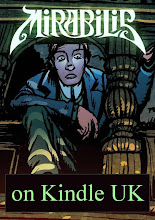“Max had rather quaint ideas about a lady of nobility. As a result, to please him, I took to smoking Black Russian cigarettes in a holder (without inhaling) and drinking neat Cognac as an aperitif before dinner.”The editor had seized on this as a failure to “show not tell”, and gave an example of how to expand it into a 250-word scene in which Max introduces the narrator to Russian cigarettes for the first time.
That advice was completely wrong. Because Ms Williams had shown, and very elegantly too in only 37 words. The telling version of that passage would have gone something like this:
Max had rather quaint ideas about a lady of nobility. As a result, to please him, I began behaving in a more sophisticated way.”There are two writing rules that often, as here, get confused. “Show not tell” is a corollary of Forster’s “Only connect!” (the most important rule of all) and it means that the writer shouldn’t just communicate a fact, but must also make us feel it. “The room was very big.” Well, “The room was as big as a cathedral nave” at least evokes a mental image, though possibly, “The room was so big that it made Jeff feel like a child being led into a classroom for the first time” is better because more personal.
The other rule, which I suspect the editor who commented on Ms Williams’s story was thinking of, is “make a scene of it”. This is a lot less of a hard and fast rule. In There Will Be Blood, for example, we might expect a scene of Daniel Plainview dragging himself back to town after breaking his leg in the shaft where he’s just struck oil. Instead, Paul Thomas Anderson, the writer/director, just cuts straight to Plainview on a stretcher watching the men he’s hired tally up his newfound wealth.
You’ve got to be a little bit careful about breaking the “make a scene of it” rule. Audiences can be mistrustful of things that happen off-stage and that they only get to hear about later. It’s safe enough if the scene you’re skipping would only have covered routine details that the reader or viewer can fill in for themselves. For example, after Episode 8 (“The Sleep of Reason”, DFC #37) we cut straight to Jack in Paris. You didn’t need to see him pack a bag, go and get his ticket from the Royal Mythological Society, and catch a boat – all that was obvious. But if we’d missed out the earlier scene of Gus escaping from Bedlam and just referred to it in a later episode, you’d have wondered if the info was kosher. And quite right too.
Show not tell comes in when, for instance, Jack balks at shaking Gerard’s hand in Episode 1. Or later, on the beach at Selsey, when he remembers himself as a child watching his parents go off in a boat. Hopefully you empathized more with Jack then than if he’d simply stated his feelings – though indeed, dialogue can show instead of tell:
SAMThat is showing. It connects us with Sam even more effectively than a wide aerial shot of the two little fellows slogging across a big field, and certainly more than any factual statement of distance would have done.
This is it.
FRODO
This is what?
SAM
If I take one more step it'll be the farthest away from home I've ever been.
(Frodo gives Sam a pat on the shoulder.)
FRODO
Come on, Sam.
My wife, by the way, has a thousand writing tips like these and she explains them a whole lot better. (I know, I know – but I’m a fiction writer. When it comes to nonfiction I’m as articulate as Gort the robot.) Anyway, you can read more of Roz’s tips here.

























No comments:
Post a Comment